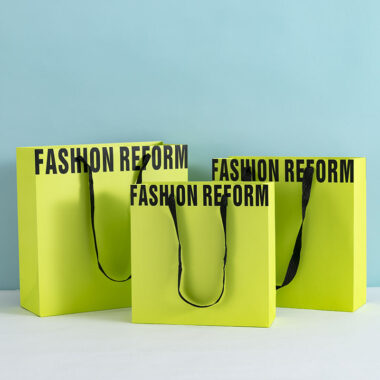🌱 1. Switching from Plastic to Paper for Cost Transparency
Paper bags allow brands to clearly calculate packaging costs since the base material — kraft paper — offers predictable pricing and easier sourcing. Unlike plastic, paper supply chains are less volatile, and bulk ordering from Paper Bag Manufacturers provides stable cost control.
Moreover, many countries offer incentives for eco-friendly packaging, meaning businesses save not only on materials but also on compliance costs.
💡 2. Optimizing GSM and Dimensions for Functionality
Retailers often overpay for unnecessarily thick paper or oversized bags. By selecting the right GSM and bag dimensions, brands can reduce per-unit cost without compromising strength. Leading Paper Bags Wholesale suppliers provide material consultation to balance weight and durability.
For lightweight items such as cosmetics or clothing, an 80–100 gsm kraft paper bag often performs as well as a thicker variant, effectively cutting paper usage by up to 20%.
🏭 3. Bulk Procurement and Centralized Sourcing
Working directly with manufacturers instead of resellers enables economies of scale. Bulk orders of 10,000+ units often come with tiered discounts on printing and lamination. This approach also eliminates third-party markup, streamlining logistics from production to delivery.
Additionally, centralized purchasing minimizes freight fragmentation and packaging waste, enhancing cost efficiency across multiple stores or e-commerce outlets.
⚙️ 4. Streamlined Printing and Logo Integration
Instead of multiple ink layers or complex embossing, retailers can opt for monochrome or two-color designs, reducing printing plate costs by 30–40%. Paper bag factories often provide in-house printing services that optimize layout efficiency, allowing multiple SKUs to share a single printing run.
🔄 5. Reusability and Brand Value Retention
High-quality kraft bags can serve as reusable shopping bags, effectively becoming walking advertisements. Although slightly more expensive per piece, their repeated use reduces the effective cost per exposure, which is a major advantage for sustainable brands.
🌍 6. Sustainable Practices Drive Long-Term Savings
Beyond direct cost savings, choosing recyclable materials reduces environmental levies and improves consumer loyalty. Many retail chains find that switching to paper packaging enhances their brand perception, leading to higher customer retention and ultimately better ROI.














